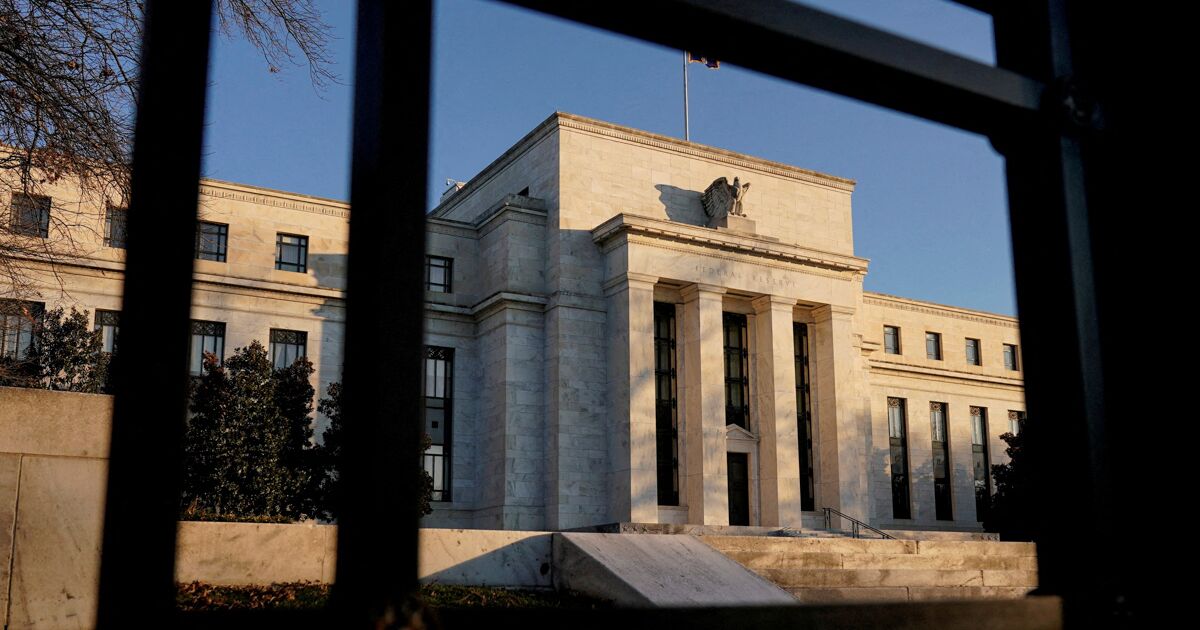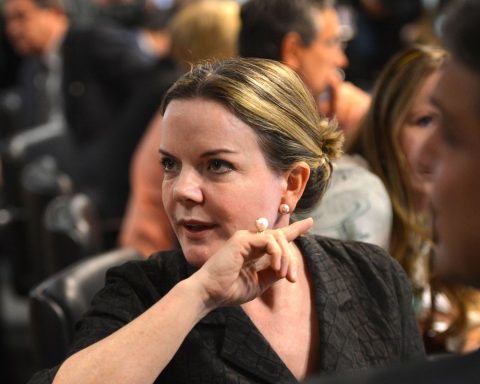“I don’t think there’s any compelling case to start with a 50 basis point rate hike,” Cleveland Fed President Loretta Mester said Wednesday.
A day later, investors consider that the latest reading of inflation in the United States changes the situation – home prices rose 7.5% in the 12 months to January – and agents in the market consider that the probabilities of a rise of Rates this big next month are much higher than when Mester spoke.
Fed policymakers have already signaled that they will start raising the central bank’s benchmark interest rate from near zero at the March meeting, just days after their two-year currency-buying streak came to an end. billions of government bonds every month to keep financial conditions easy and stimulate borrowing during the COVID-19 pandemic.
By many measures, they are already late to the party, as with inflation at its highest level in 40 years and a super-tight labor market, the Fed is only just preparing to remove crisis-era monetary support.
“All of this logically supports a 50 basis point move in March,” said Karim Basta, chief economist at III Capital Management. “The more relevant question remains whether the Fed abandons its gradualist approach.”
For Mark Cabana, head of US interest rate strategy at Bank of America Global Research, the argument is getting stronger as market bets on a bigger rate hike in March continue to rise.
“The logic for them to do it is compelling,” he said, noting that if they did, the Federal Reserve’s monetary policy would get to where it needs to be faster in the face of inflation, while keeping borrowing costs still very high. below the level at which they would slow economic growth.
“Are you going to tell the market that it’s wrong and that it has to slow down?” Cabana said. “If the market gives the Fed the option, we don’t think the Fed will tell the market it’s wrong.”
His view contrasts with that of many economists, including those at his own bank, who say the US central bank is now tied to quarter-percentage-point increases for future rate hikes.
Instead of starting with a bigger increase, they say, the Fed will simply speed up the pace of rate hikes or start reducing its balance sheet earlier than expected.
With a new inflation reading and more employment data ahead of the March meeting, analysts don’t know if that trend will continue if the numbers remain higher than expected.
trapped?
The Fed does not want to scare the financial markets, which in recent years have required diligent control to avoid a sharp tightening of financial conditions and a repetition of episodes such as the “taper tantrum” of 2013, which was considered a communication error .
A half percentage point hike in March wouldn’t hurt the economy, economists say, but the signal it sends about the future path of monetary policy could be, if traders begin to expect similarly sized rate hikes at future meetings.
“The market goes from seeing five (quarter-point rate hikes) to seeing eight, ten, and then there can be a real tightening of financial conditions,” said Aneta Markowska, chief financial economist at Jefferies.
“They are way behind the curve, and I think they have a lot of catching up to do,” added Markowska, “but I think it makes sense to move, not slowly, but not too aggressively.”
Holding rate hikes in 25 basis point increments allows the Fed to better tailor policy to the data if inflation cools on its own soon, as Atlanta Fed President Raphael Bostic said this week, who believes this is somewhat likely.
In fact, Fed officials are betting that much of the spike in inflation will subside on its own in the second half of this year, as supply chains unwind and the COVID-19 pandemic eases. allow more people to go back to work, making the need for more rate hikes less important.
Furthermore, the relative tightening of financial conditions that has occurred in a few months means that the Federal Reserve has less to catch up, despite the apparent disconnect between keeping its official interest rate close to zero and inflation. which is over twice its target of 2%.
One way to quantify such tightening is the Wu-Xia “shadow” rate, which uses bond yields and other market cues to show how loose monetary policy is when the policy rate remains near zero. .
After the pandemic-triggered recession, monthly purchases of $120 billion in Treasuries and mortgage-backed securities by the Fed pushed that rate down to minus 2%.
Since November, when Fed Chairman Jerome Powell began signaling a quicker end to the bond-buying program and an earlier start to rate hikes, the rate has risen about 1.65 percentage points.
That has authorities such as St. Louis Fed President James Bullard arguing that there isn’t much need for the Fed to go big now, at least to begin with.
Narayana Kocherlakota, an economics professor at the University of Rochester known for his dovish views after the 2007-2009 recession when he was president of the Minneapolis Fed, sees it differently. He even hopes there will be dissent from him, perhaps from Fed Governor Christopher Waller, in case the central bank is not more aggressive in March.
“I think going to 50 now also puts it on the table at every meeting going forward,” he said. Much higher-than-expected inflation, she said, “deserves an aggressive response.”















